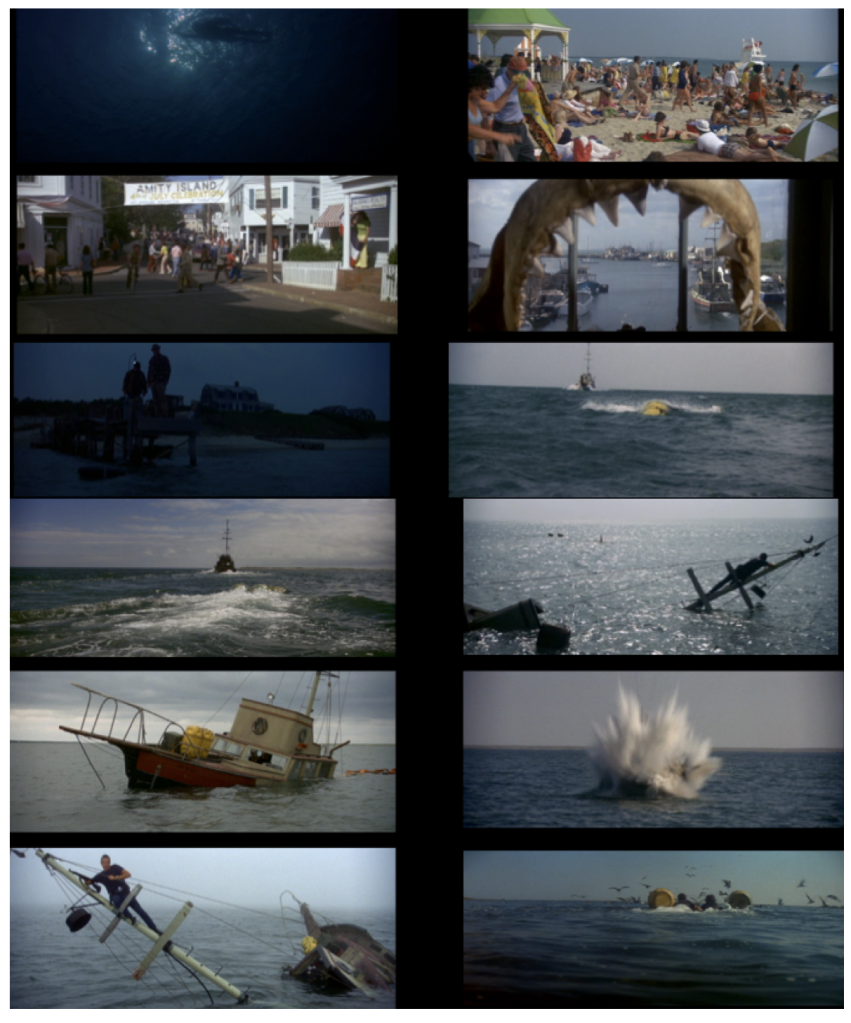
THE TECHNICAL DIMENSION
SPACE IN CINEMA
FRAMING – I’M READY FOR MY CLOSE-UP
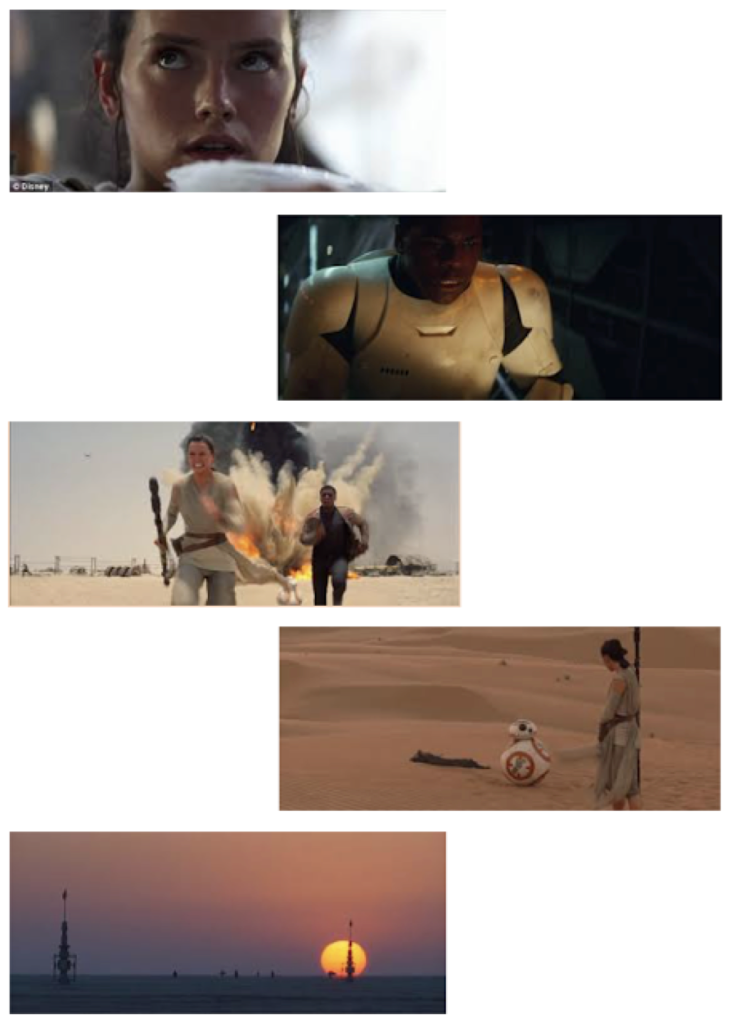
2-1: Framing
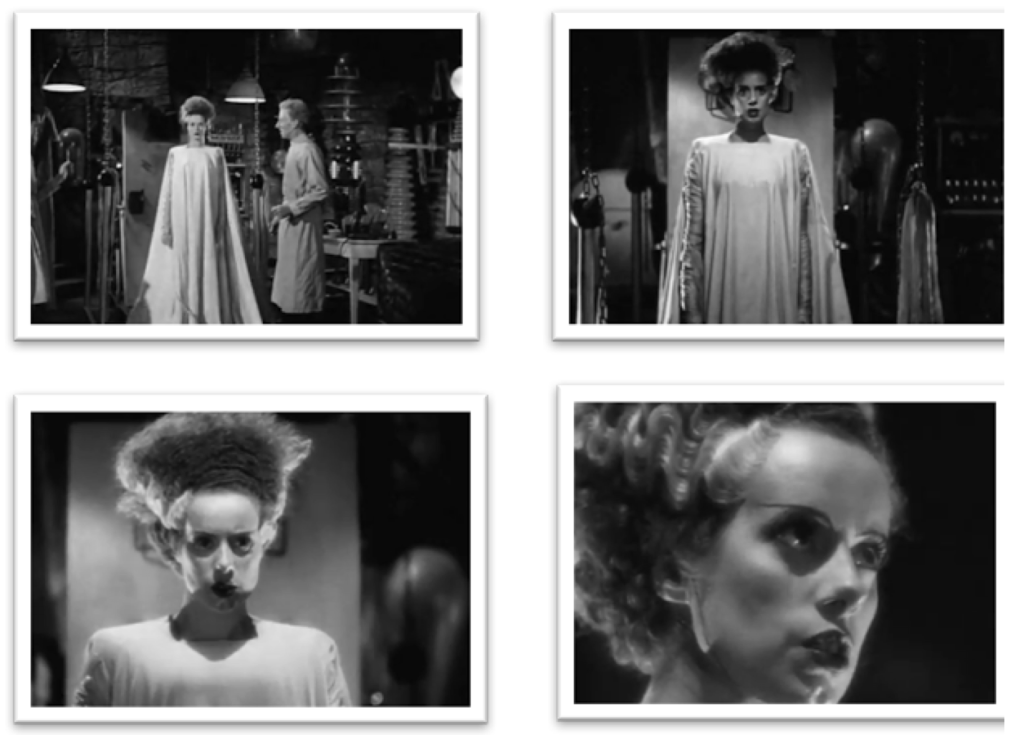
The frame (noun) defines and reveals a two-dimensional, rectangular “slice” of the world created by the filmmakers.

Framing (verb) refers to aligning and setting the frame in relationship to the film’s geography and subjects, deciding in the process how much or how little of that world and subject to reveal, and the size of objects within the frame. This decision informs the relative importance of objects and our emotional distance from or nearness to subjects. It also sets a specific relational balance between a subject and the environment.
The motion picture industry has somewhat standardized, defined and labeled different kinds of framing, based largely on the size of the human subject or subjects in the frame. In practice, there are some vagaries in the use of these terms, so expect some inconsistency even among industry professionals.
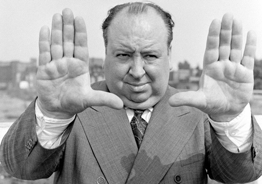
“The size of an object in the frame should equal its importance in the story at that moment.” Director Alfred Hitchcock
2-2: The Close-Up (Abbreviated CU)
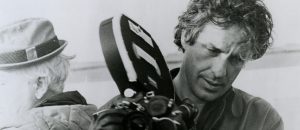
“The greatest location in the world is the human face.” Director John Cassavetes
Close-Up – A shot framed to emphasize the human head or face, or something of the same approximate size, usually at the expense of the environment.
Types: Tight close-up, extreme close-up, shoulder shot
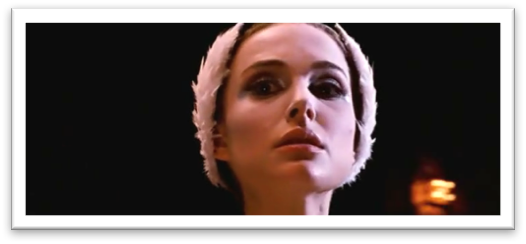
“We used a lot of close-ups. For me, the close-up is one of the great inventions of the 20th century; it allows an audience to sit in a dark room and stare into the eyes of a person who’s emoting without being self-conscious.” Darren Aronofsky on “Black Swan” American Cinematographer
The immediate cultural and narrative antecedent to the movies is the theater, where the sense of intimacy and subtlety engendered by a close-up is nearly impossible. So the close-up as a narrative tool is almost uniquely cinematic.
As Aronofsky suggests, the close-up is one of cinema’s most powerful tools. Unlike a portrait that captures a specific frozen moment either in painting or in photography, the close-up exists in time. The positioning, the expressions, the emotions can change and evolve.
Study the close-ups that follow. How much story does a close scrutiny of the landscape of the human face communicate? How subtly can emotion be conveyed? How close do we feel both physically and empathically to the characters? What is conveyed that in a wider view we would miss?

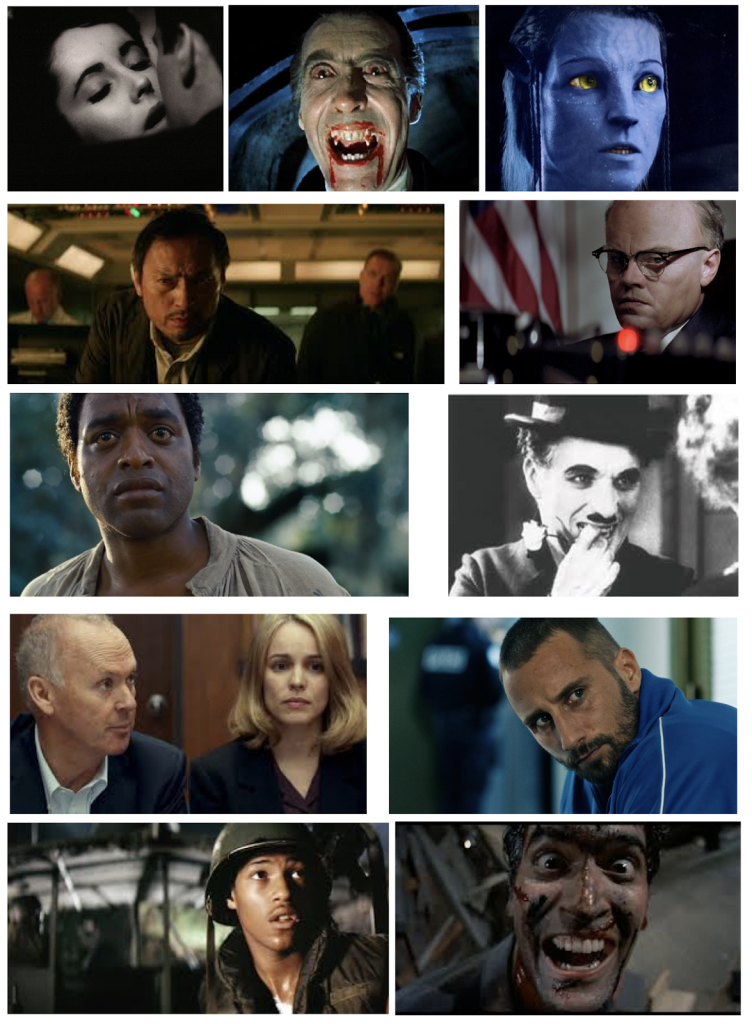
WATCH: Close Up Shots that POP – The Best Camera Angles in Film (https://youtu.be/O5ZCsw22JRk)
“La Passion de Jeanne D’Arc” (1928)
In 1928, director Carl Theodor Dreyer, in his film “La Passion de Jeanne D’Arc” shot the story of Joan of Arc relying extensively on close-ups.
 “Nothing in the world can be compared to the human face. It is a land one can never tire of exploring. There is no greater experience in a studio than to witness the expression of a sensitive face under the mysterious power of inspiration. To see it animated from inside, and turning into poetry.” Carl Theodor Dreyer, Thoughts on My Craft
“Nothing in the world can be compared to the human face. It is a land one can never tire of exploring. There is no greater experience in a studio than to witness the expression of a sensitive face under the mysterious power of inspiration. To see it animated from inside, and turning into poetry.” Carl Theodor Dreyer, Thoughts on My Craft
WATCH: Critics’ Picks – ‘Passion of Joan of Arc’ (https://youtu.be/X7ddz1S8pJ8)
“A Place in the Sun” (1951)
In 1951, director George Stevens was praised for his use of close-ups to create an almost unprecedented air of romance and passion in “A Place in the Sun.” The frame tightly embraces actors Elizabeth Taylor and Montgomery Clift, enhancing their intimacy while forcing the rest of the world to vanish from view. Of the close-ups, critic Bosley Crowther wrote that they are “contrived to catch the heartbeat of agitated blood in youthful veins, the heat of flesh released from pressure, the flash of fear of desperation in troubled eyes.”
His (Stevens’) camera is effectively restrained; it peeks through doorways or stands patiently in the corner like a hidden witness; and when it moves suddenly into close-ups, the effect of intimacy is breathtaking.” Bosley Crowther. Time, September 10, 1951.
WATCH: A Place in the Sun (https://youtu.be/wEuFNnJSIw80)
“Les Miserables” (2012)
In 2012, when the film adaptation of the wildly popular stage musical “Les Miserables” was in post-production, actor Eddie Redmayne was watching a rough cut of the show’s signature number, “I Dreamed a Dream,” as performed by his fellow actor Anne Hathaway. He noticed something missing among the tracking shots and full shots and medium shots – the striking close-up that had appeared briefly in the film’s teaser trailer.
WATCH: Les Misérables – Teaser Trailer (HD) (https://youtu.be/tnS9HhYVIpU)
According to director Tom Holland, “And then Eddie Redmayne, who’s been a friend of mine since I worked with him on Elizabeth I, said to me: “Why aren’t you using that close-up that you’re using in that teaser trailer?” He was talking about the way you see all the muscles in Anne’s neck work as she sings and the raw power of that, and I thought, God, that’s interesting. So, it was actually Eddie’s suggestion to re-examine that scene, and the moment we put that close-up in, the film played in a completely different way. The level of emotion went up about a hundred percent. So the process of moving toward these close-ups was a process of discovery … The tight close-ups won out in the cutting room because, over and over again, the emotional intimacy was far more intense than when you go loose. “
WATCH: I Dreamed a Dream – Anne Hathaway (HD) (https://youtu.be/ulJXiB5i_q0)
I thought the great weapon in my arsenal was the close up, because the one thing on stage that you can’t enjoy is the detail of what is going on in people’s faces as they are singing. I felt (that) having to do a meditation on the human face was by far the best way to bring out the emotion of the songs. Tom Hooper, Director, “Les Miserables” “Les Miserables” movie relies on close-ups for emotional punch (http://www.reuters.com/article/entertainment-us-lesmiserables-idUSBRE8BK0UO20121221)
WATCH: Close-Up Encounters of the “Miserables” Kind (https://youtu.be/bgSPJd9O7BY)
2-3: The Overuse of the Close-up
Iconoclast Orson Welles, director of “Citizen Kane,” “Touch of Evil,” and “Chimes at Midnight,” once suggested the close-up was a crutch for weak actors. He felt that essentially anyone could give a decent performance in a close-up; wider and longer takes were the true test of acting talent. The following exchange occurred in an interview with Welles conducted by film critic and director Peter Bogdanovich.
PB: But in acting – acting in general some things do work better in closeup. Will you give me that?
OW: Dear Peter – I’ll give you all the closeups you want. Personally, I don’t much like them, as you know. I tell actors, “Look out – if you aren’t good enough, we’ll have to move in for a close shot.”
This Is Orson Welles . Orson Welles, Peter Bogdanovich, Jonathan Rosenbaum. (http://www.openculture.com/2014/01/listen-to-eight-interviews-of-orson-welles-by-peter-bogdanovich-1969-1972.html )
Video essayist Luke Ramsden uses the work of renowned director Howard Hawks, director of “Scarface” (1932), “Bringing Up Baby” (1938), “His Girl Friday” (1940), “To Have and Have Not’ (1944), “The Big Sleep” (1946), “Rio Bravo” (1959) to argue against the overuse of the close-up.
WATCH: Howard Hawks: The Art of the Close-Up Film Analysis (https://youtu.be/1oHOziiywic)
OPTIONAL VIEWING: Alfred Hitchcock’s Close-Ups (https://vimeo.com/137761623)
OPTIONAL VIEWING: The Jonathan Demme Close-Up (https://vimeo.com/126757480)
OPTIONAL VIEWING: The Art of Close-ups with Edgar Wright (https://youtu.be/vedJVCvdBgI)
OPTIONAL VIEWING: The Close Up Shot: A Video Essay (https://youtu.be/GeApVBBf1as)
REFERENCE: What is ‘Hitchcock’s Rule’ & How Can It Help You Tell Better Stories http://nofilmschool.com/2015/11/hitchcock-rule-help-you-tell-better-visual-stories
REFERENCE: The Critics’ Corner: A Place In The Sun http://www.tcm.com/this-month/article/357293%7C0/A-Place-in-the-Sun.html
REFERENCE: Theory of Film – The Redemption of Physical Reality by Siegfried Kracauer https://www.scribd.com/document/118801906/Theory-of-Film
REFERENCE: Marshall and the Movies – Review: Les Miserables https://marshallandthemovies.com/2012/12/19/lesmis/#more-11346
REFERENCE: Movieline – Tom Hooper Defends His ‘Les Misérables ‘ Close-Ups & Reveals Who’s The Bigger Musical Geek: Jackman or Hathaway http://movieline.com/2012/12/25/tom-hooper-interview-les-miserables-defends-close-ups/
2-4: Close-Up Type: The Tight Close-Up
Some professionals will designate a facial close-up that crops the top of the head and/or the face below the lips as a tight close-up. It serves a similar function as a standard close-up but creates a more claustrophobic feel or increased sense of proximity and therefore enhanced intimacy or menace, depending on context.
There is no clear-cut delineation between a standard close-up and a tight close-up.
Study the tight close-ups that follow. What feeling or story point is conveyed that in a standard close-up would be absent? Are we as a viewer forced further into the characters’ heads and thoughts?

2-5: Close –Up Type: The Extreme Close-Up (Abbreviated ECU)
Extreme Close-Up – A shot framed to emphasize a part of the human face or a diminutive object, usually something smaller than a human head.
Its obvious function is to elevate the importance of a detail by enlarging it within the frame.
Study the extreme close-ups below. How would the enhanced focus on a part of the face or the enlargement of a small object help create emotion and/or propel the narrative forward?
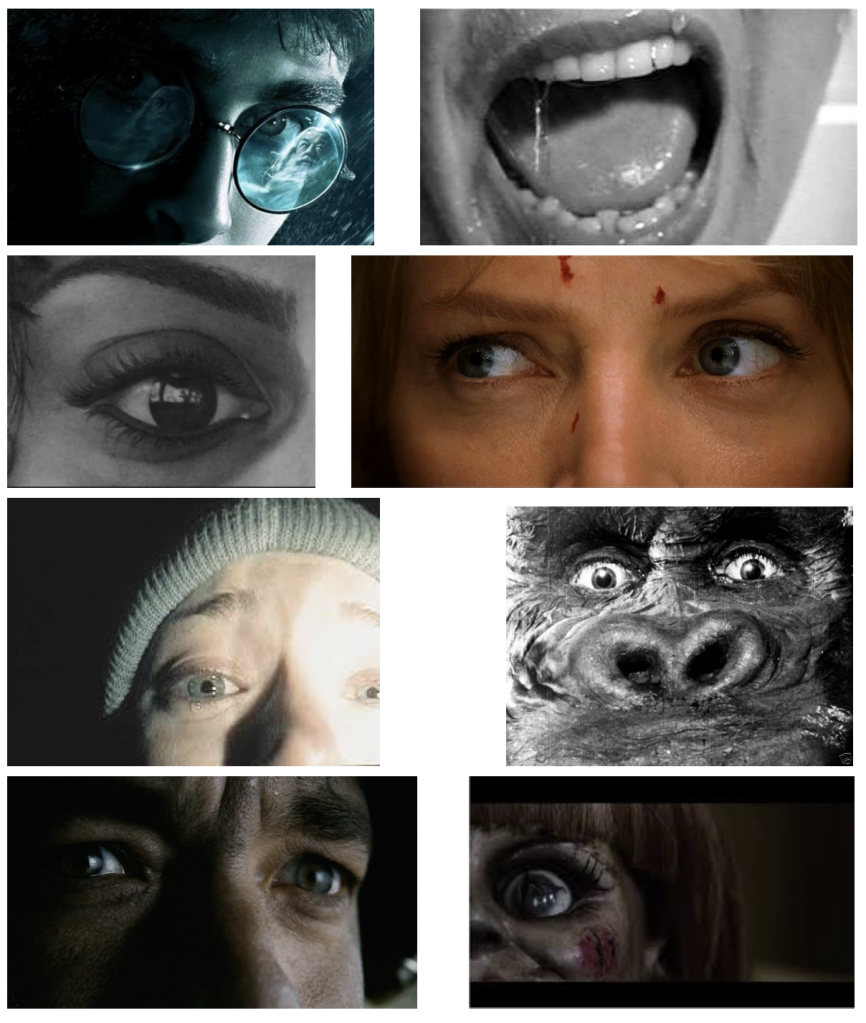
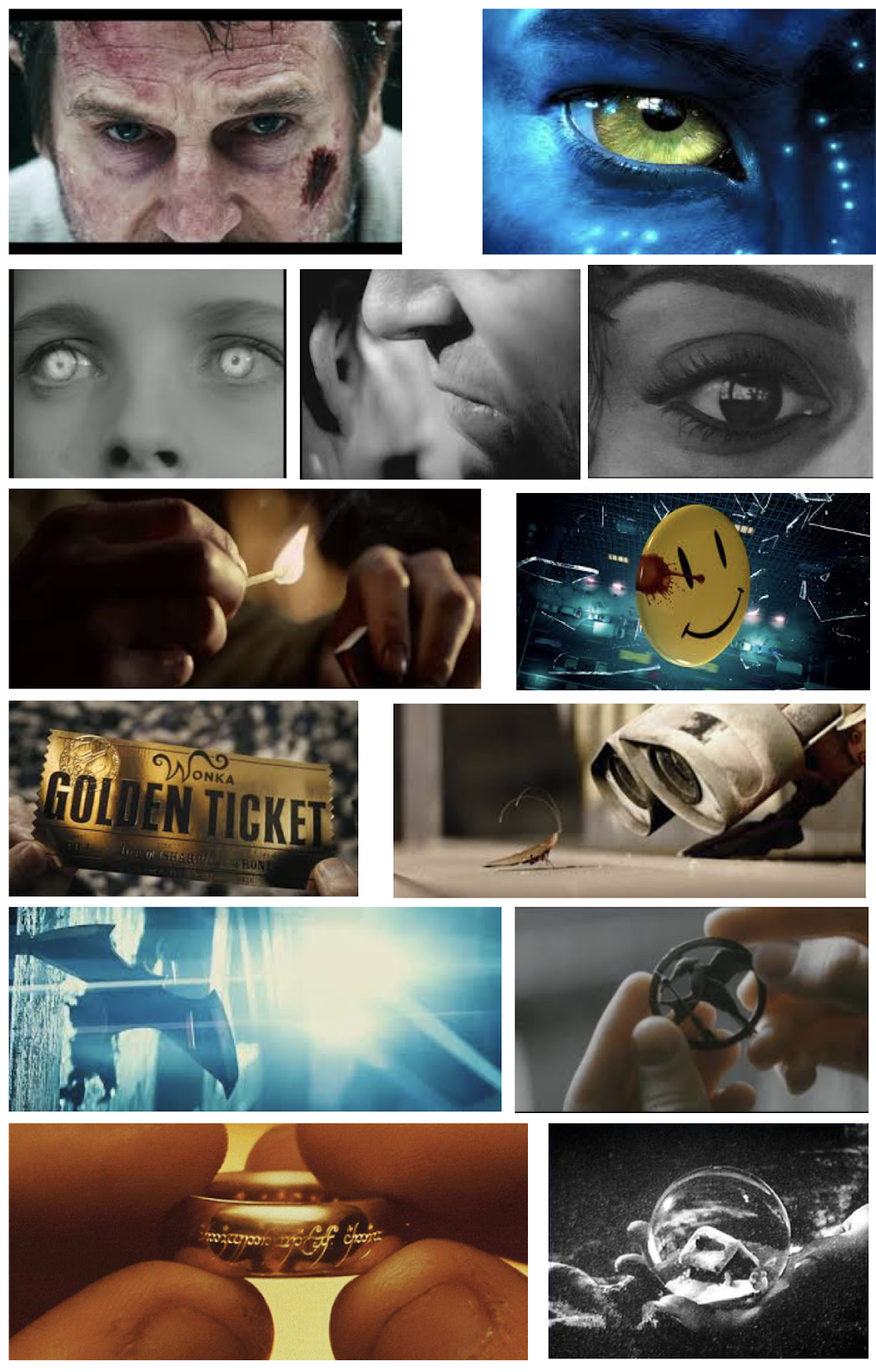
“Citizen Kane” (1941)
The opening of Orson Welles’ seminal first film uses extreme close-ups to a variety of effects. At the beginning of the first shot in this clip, the subject appears deceptively larger than it is. It appears to be a long shot of a cabin in snow. A pull back reveals the shot to be an extreme close-up of a snow globe. The globe and what it represents will be an important clue to the film’s central mystery. But more important in both the film and in film history is Kane’s final word as he dies, “Rosebud,” uttered by a giant mustachioed mouth that fills the screen. One can only imagine the impact of this shot on an audience in a theater with a 40-foot wide screen. “Rosebud” and what it may mean will drive the film’s entire narrative. The extreme close-up emphasizes its importance.
WATCH: CITIZEN KANE – Rosebud (https://youtu.be/O4mQqVqRB7I)
“The Good, the Bad, and the Ugly” (1966)
For the climactic three-way shootout of this western, director Sergio Leone crosscuts between tight and extreme close-ups, building a visual crescendo to the scene’s violent but brief climax. In doing so, he eliminates the environment as a factor and forces the viewer to concentrate only on the faces of the antagonists and in turn what they may be thinking.
WATCH: The Good, the Bad and the Ugly (11/12) Movie CLIP – Three-Way Standoff (1966) HD (https://youtu.be/5PgAKzmWmuk)
“Blue Velvet” (1986)
In the bizarre mystery “Blue Velvet,” director David Lynch suggests the dark and depraved underbelly of an apparently idyllic small town in a series of extreme close-ups that end the following clip.
WATCH: Blue Velvet – Opening Sequence (https://youtu.be/TwuzI8Y0uW0)
The inciting incident of “Blue Velvet” is a gruesome discovery, revealed in extreme close-up.
WATCH: Blue Velvet (1/11) Movie CLIP – That’s a Human Ear (1986) HD (https://youtu.be/BeYx_CBH700)
And the film concludes by bringing us back to the deceptively serene world in a surreal transition of extreme close-ups.
WATCH: Blue Velvet – The Ear (https://youtu.be/nbnhQvaAu_I)
“The Blair Witch Project” (1999)
Daniel Myrick and Eduardo Sanchez’s highly influential and astonishingly successful “found footage” horror film was revolutionary in both its execution and marketing. The film itself purports to be the found footage of a trio of student filmmakers who wander into the woods of Maryland to shoot a documentary on a local folktale and are never seen again. In this scene, actress Heather Donahue turns her camera on herself and makes a final apology for instigating the disastrous outing. It is depicted as an unintentional extreme or tight close-up, but its power is derived from both the proximity suggested by the close-up and the purposefully haphazard framing.
WATCH: The Blair Witch Project – Apology scene (https://youtu.be/Z66RpatHajQ)
Optional Viewing: David Fincher’s Extreme Close-Ups (https://vimeo.com/152923976)
I loved extreme close-ups for the longest time, but for some reason I always felt like ‘No one is getting it exactly the way I want to see it – the way I want to see an extreme close-up” Paul Thomas Anderson
Optional Viewing: Paul Thomas Anderson’s Extreme Close-Ups (https://vimeo.com/134670866)
2-6: Close-Up Type: The Shoulder Shot
A shoulder shot is simply a close-up that includes the shoulders. But in this simple concept we see the beginnings of the central tension of framing – the relative importance of the human face to the human body and the human body to the environment and landscape.
Creating a shoulder shot moves us slightly further from the intimacy and proximity a standard or tight close-up creates. We now have other considerations and their narrative contributions – wardrobe, posture and environment come more into play.
There is no clear-cut delineation between a standard close-up and a shoulder shot.
Study the shoulder shots below. What additional information is being provided by this slightly wider view in relation to a standard or tight close-up? What might the narrative and emotional advantage be of this information?
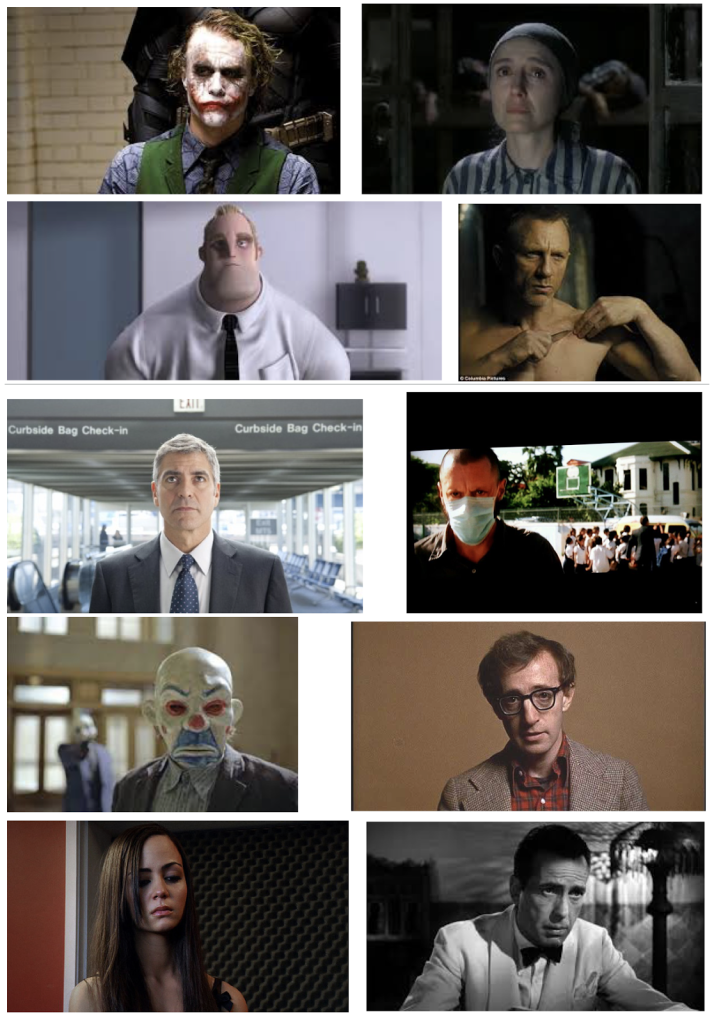

2-7 The Medium Shot (Abbreviated MS)
Medium shot – A shot that frames a person’s face and a significant portion of the person’s body.
Types: Waist shot, cowboy shot.
In the tension around the relative importance of the human face to the human body and the human body to the environment and landscape, the medium shot still emphasizes the human being, but not the human face. The environment is more involved within the frame, but the human subject is still dominant.
There is no clear-cut delineation between a shoulder shot and a medium shot.
Study the medium shots below, including the waist and cowboy types. Consider the balance between head and body, and between body and environment. Look at posture and costuming. How do these images tell a story differently than a close-up?
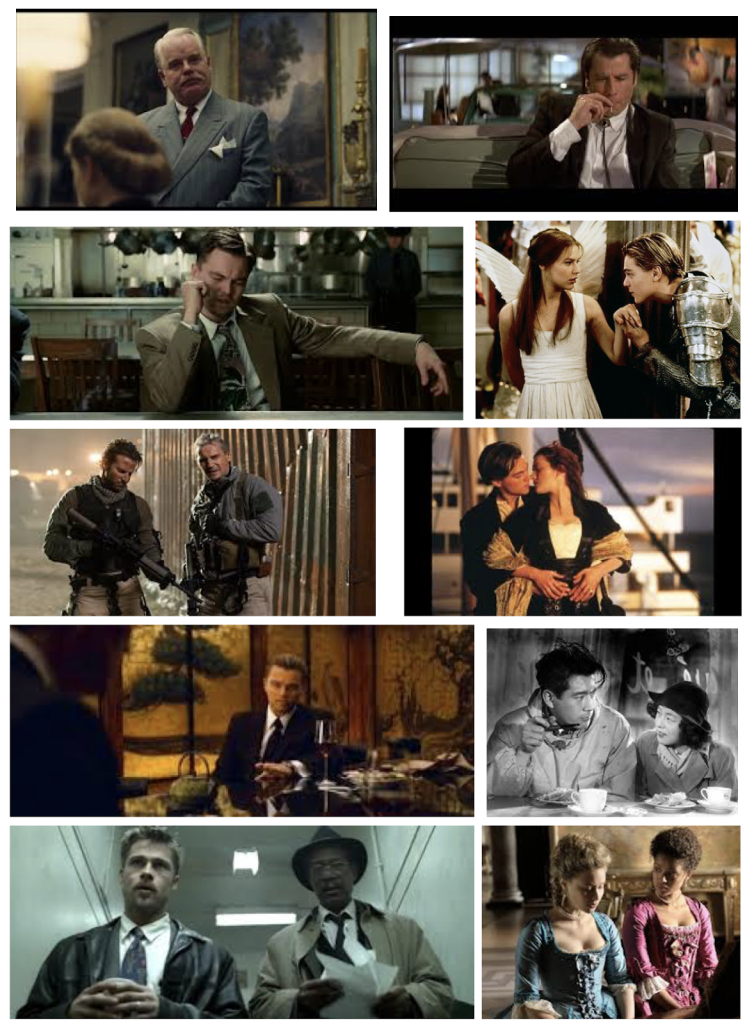
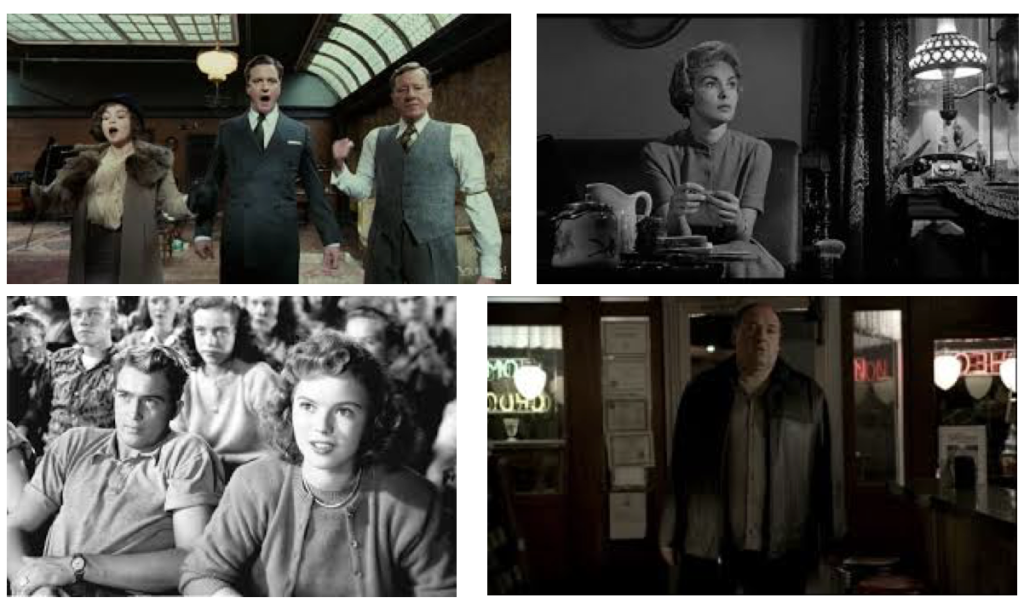
2-8: Medium Shot Type: The Waist Shot
Waist shot – A specific medium shot in which the subject is seen from the waist up.
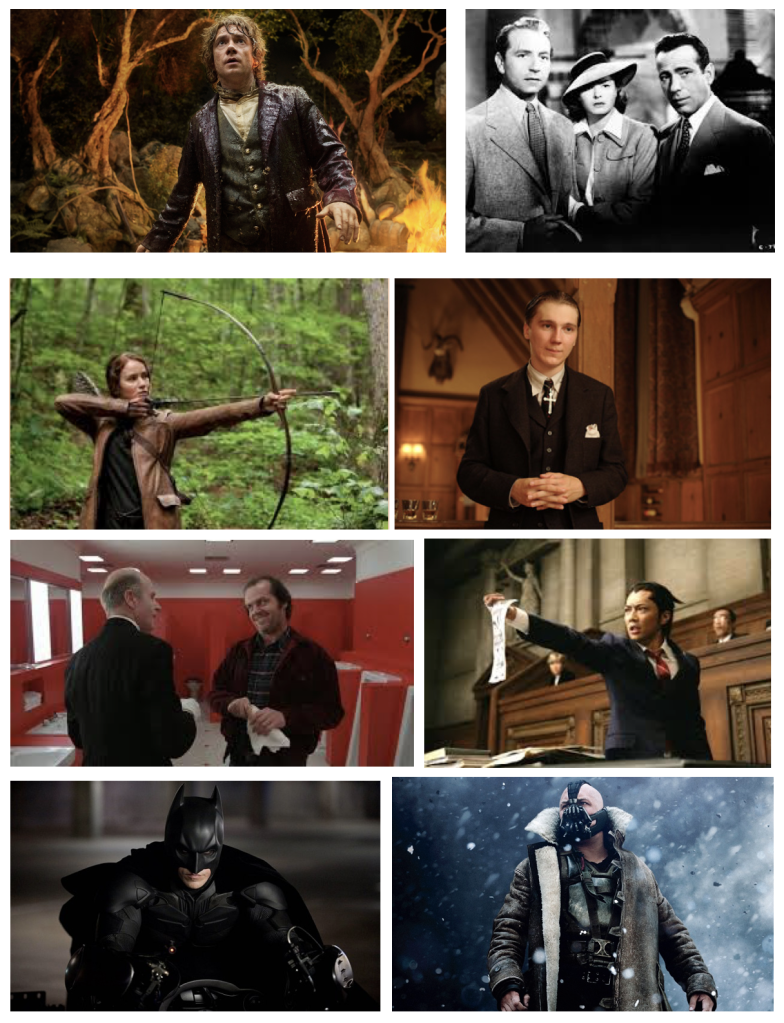
2-9: Medium Shot Type: The Cowboy
Cowboy – A specific medium shot in which the subject is seen from the mid to lower thigh up. It is so called as this framing was often used in westerns to frame a holstered hip gun into the shot.
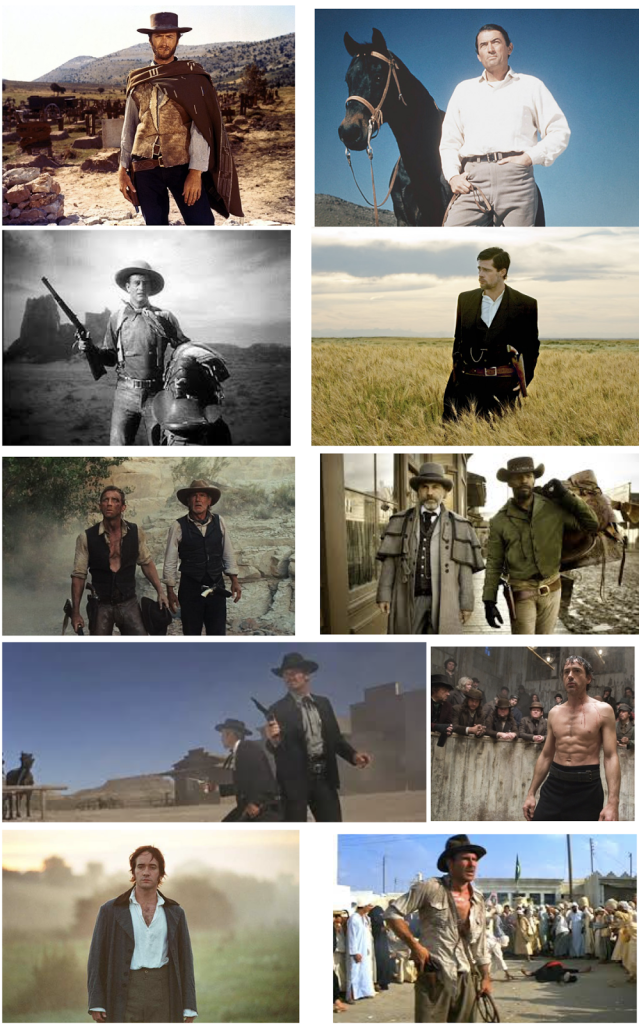

WATCH: Medium Shot – Film Elementary (https://youtu.be/PsIjovLdVzg)
2-10: The Full Shot (Abbreviated FS)
Full shot – A shot that frames one or more human figures from head to foot. In a full shot, posture and costuming take precedence. A full shot is about the human form, but the environment is also a key player in the image.
Study the full shots below. How is character visually defined in a full shot? What contributions do posture and wardrobe make? How much does the environment impact character? In each shot which seems to communicate more info – the character or the environment?
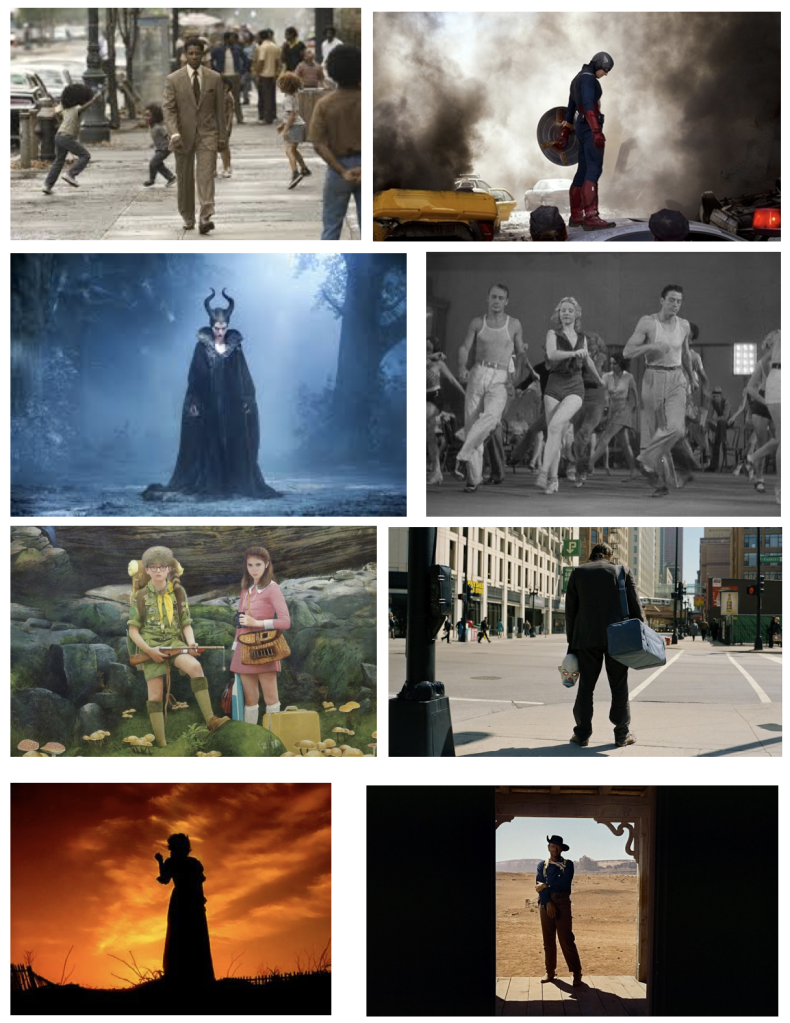

2-11: Fred Astaire and Cinematic Dance Performances
Fred Astaire was one of the great stars of the golden age of Hollywood. An accomplished dancer, he felt that dance is about the body as a whole, the full figure, not about bits and pieces, like feet and hands and faces, fragmented into long and full and medium shots and close-ups, then edited together. This more frenetic and fragmented was the style of early movie musicals, such as those of choreographer and director Busby Berkeley.
WATCH: Lullaby of Broadway – Excerpt – Busby Berkeley (https://youtu.be/Yx6s-YReOJY)
For Astaire, dance existed as a complete performance, uninterrupted and un-fragmented. He insisted that the dance numbers in his films maintain their spatial and temporal integrity. So his contract required the filmmakers to shoot his dances in full shots and long takes.
ASIDE: Astaire’s frequent dancing partner in ten films was the talented Ginger Rogers, who did not always get the credit she deserved, as this 1982 cartoon commemorated.

WATCH: Swing Time – Rogers and Astaire (1936) (https://youtu.be/mxPgplMujzQ)
WATCH: Fred Astaire and Eleanor Powell. ‘Begin the Beguine’ Tap dance duet from “Broadway Melody of 1940” (https://youtu.be/0-b4M8jssX8)
Many other studios, filmmakers and performers adopted this technique for capturing performance. In the following clip we see Dorothy Dandridge and the Nicholas Brothers perform the hit song “Chattanooga Choo Choo” from the film “Sun Valley Serenade” (1941).
WATCH: The Nicholas Brothers and Dorothy Dandridge – “Chattanooga Choo Choo” (1941) (https://youtu.be/JTwy8ruyY40)
2-12 Dorothy Dandridge, the Nicholas Brothers and Racial Politics
Dorothy Dandridge is one of the most accomplished actresses, singers and dancers who ever lived. She was the first African-American nominated for an Academy Award for Best Actress. The Nicholas Brothers were considered to be the greatest tap dancers of their day, and they perfected if not invented an acrobatic dance style known as “flash dancing.”
Unfortunately, their cinematic careers were stunted due to their race.
There is a troubling side note regarding the previous clip. You may notice that the African-American performers are visually segregated from the white performers. This was done whenever black performers presented musical numbers in Hollywood studio pictures aimed at general audiences. (Unlike the more rare films designed solely for African-American audiences). Designed to cater to theater owners in the south and elsewhere who feared angering or scandalizing their segregated and potentially racist white audiences, it was a strategy that facilitated the easy removal of the sections featuring African-American actors from the pictures.
OPTIONAL VIEWING: Fred Astaire & Eleanor Powell – Jukebox Dance (https://youtu.be/5LOPZNhsBXY)
OPTIONAL VIEWING: Fred Astaire Firecracker Dance – Holiday Inn (1942 (https://www.dailymotion.com/video/x4suc1)
REFERENCE: Reel Classics – Ginger Rogers http://www.reelclassics.com/Actresses/Ginger/ginger-article2.htm
REFERENCE: Wikiquote – Ginger Rogers https://en.wikiquote.org/wiki/Ginger_Rogers
2-13: The Long Shot (Abbreviated LS)
Long shot – A shot framed so that more of the environment is included. The human characters, while identifiable in context, are only a small element in the larger environment. This allows for more detail of the surrounding mise en scene.
A PERSONAL ASIDE – Mise en Scene
In using the phrase “mise en scene,” I have taken an ill defined and hotly contested concept and applied it specifically to the long shot. Some consider mise en scene an umbrella phrase to describe the combination of every element within a frame. Some consider mise en scene to apply to longer takes and be a kind of antonym to editing or montage.
The French term originates in theater criticism and translates somewhat loosely to “placed in a scene.” Its first usage referred to the overall elements placed on a stage for a theatrical production – the environment, setting, lighting, placement of actors, etc. We can assume the importance of focusing on these elements in criticism is to consider their contribution to narrative, character, and their emotional impact on an audience.
Theater exists in a long shot. We see an entire stage setting and the characters within it. So for me, mise en scene in cinema refers to the overall emotional and evocative impact of the presentation of location or setting or set – the environment. And this comes most directly into play in the long shot.
WATCH: What is Mise en Scene – How Directors Like Kubrick Master the Elements of Visual Storytelling (https://youtu.be/3euNFd7-TCg)
In the tension around the relative importance of the human body to the environment and landscape within a frame, the long shot emphasizes the environment; the human subject is an element of the setting.
There is no definitive line between a full shot and a long shot. There are images that exist on the edge between the two. The key decisive factor in a long shot is the balance between setting and character.
Be aware that there is a difference between a long shot, which relates to framing, and a long take, which refers to the duration of a shot.
Study the long shots and the images in the videos below. Consider the balance between body and environment. How does making the environment so prominent an element add information important to storytelling or mood or character?
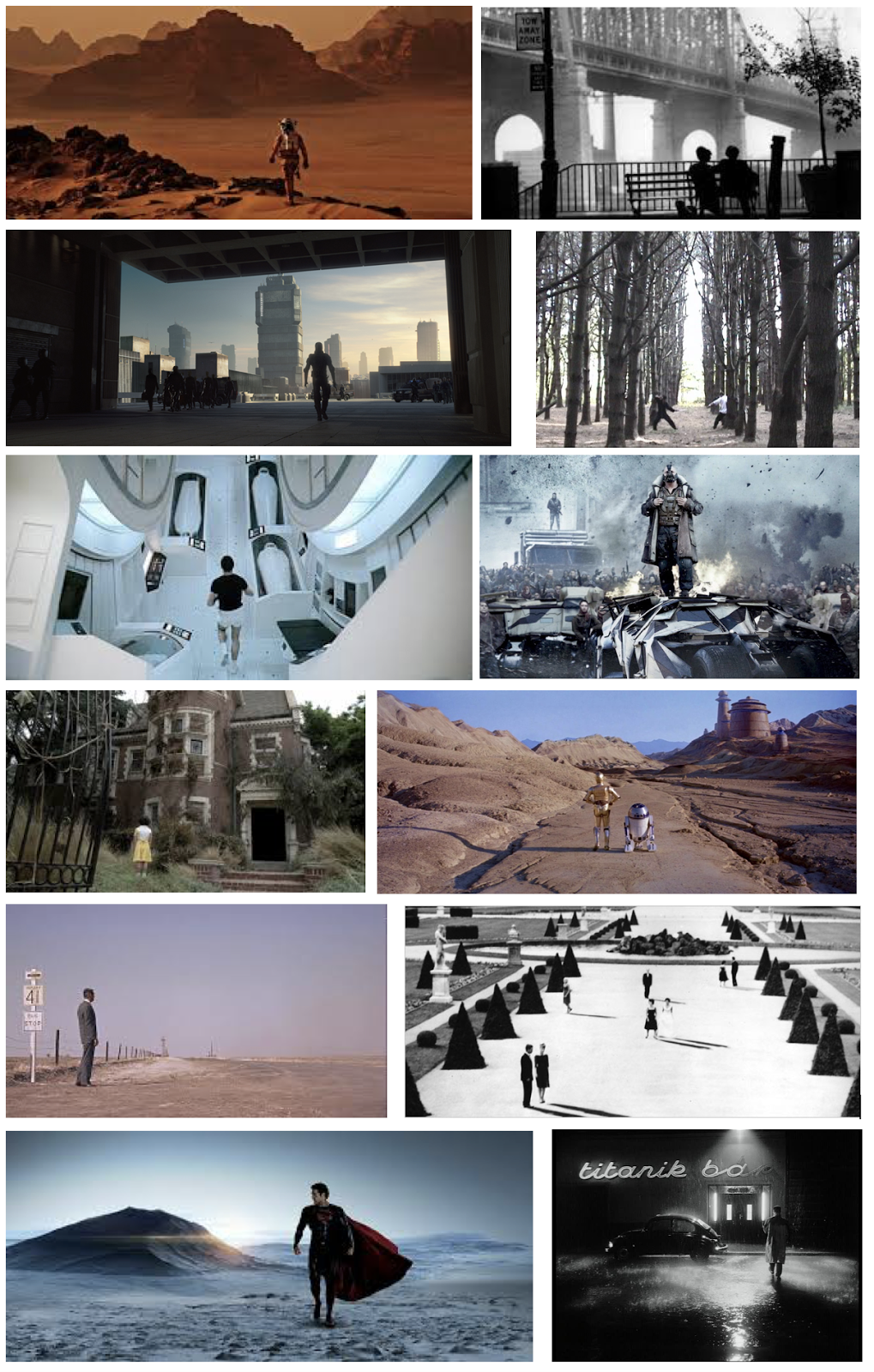
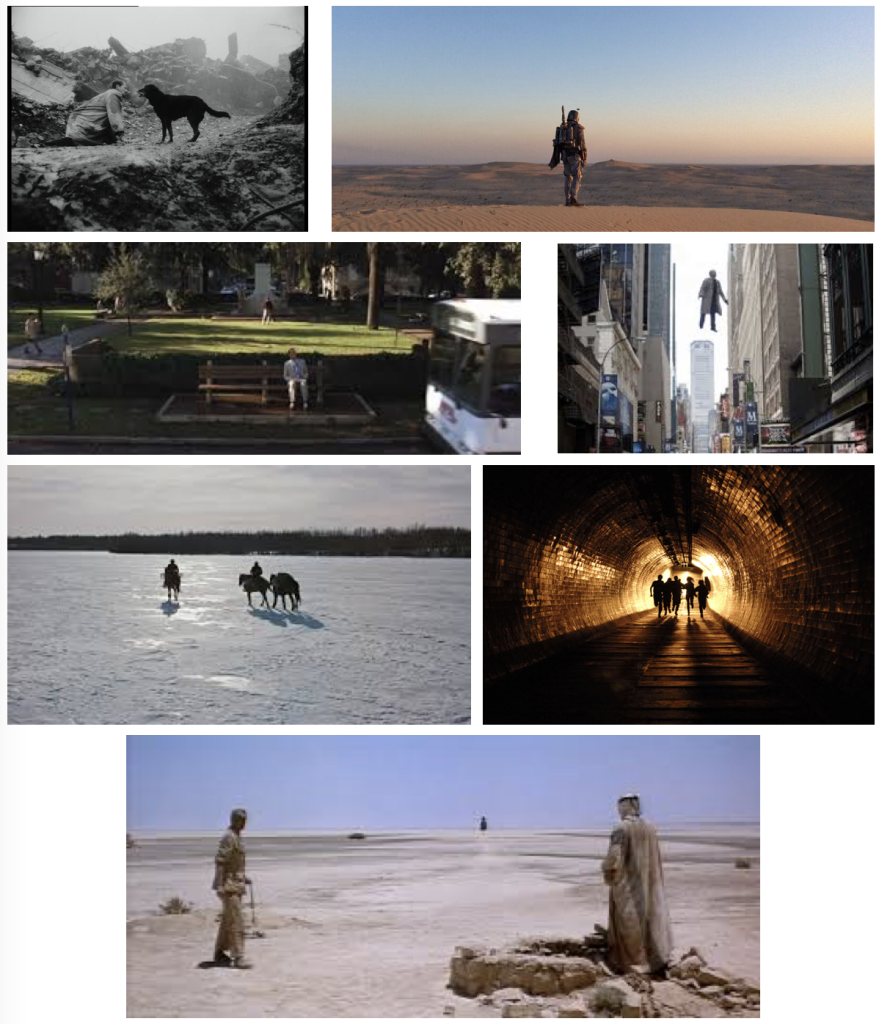
WATCH: Paul Thomas Anderson: From a Distance (https://vimeo.com/120423327)
WATCH: David Fincher: From a Distance (https://vimeo.com/170541389)
2-14: Long Shot Type: The Extreme Long Shot (Abbreviated ELS)
Extreme Long Shot – A shot framed so that a human being is visually overwhelmed by an environment. The human subject, if there even is one, is unidentifiable out of narrative context.
In the narrative tension arising from the conflict of man vs. nature, man is outmatched.
Extreme Long Shots often function as Establishing Shots, which establish the locale of the scene or film to follow, often without including any character.
Yet again, there is no definitive line between a long shot and an extreme long shot. There are images that exist on the edge between the two. The key decisive factor in an extreme long shot is that the environment or setting dominates any characters present.
Study the extreme long shots below. Consider the place of the human being within the majestic or harsh or threatening landscape. What do these shots tell us about the situation and emotion of the character?

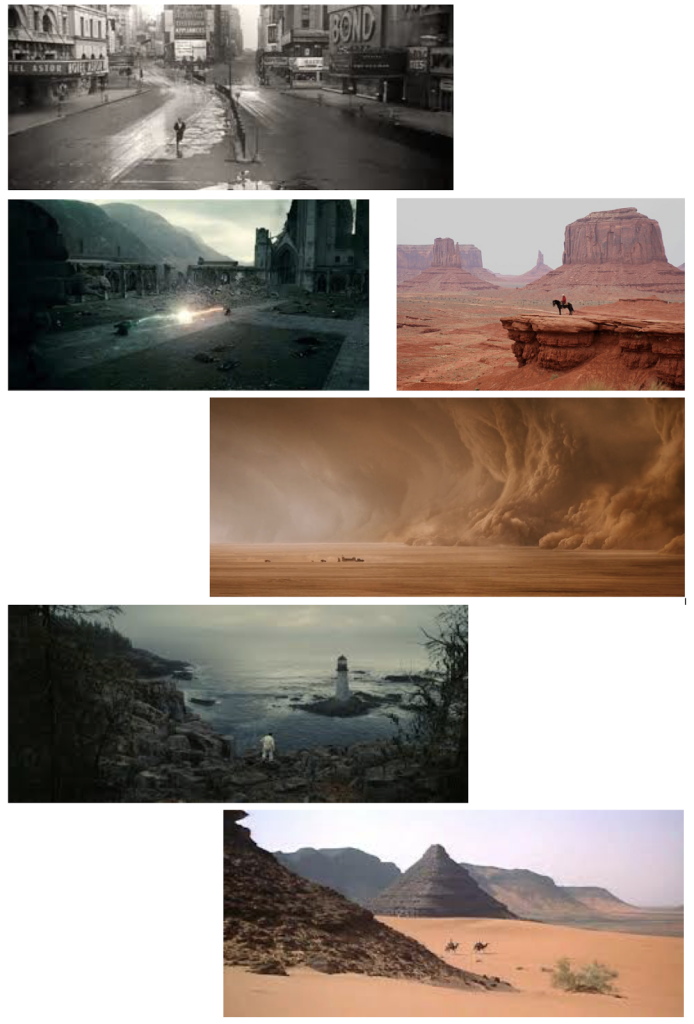
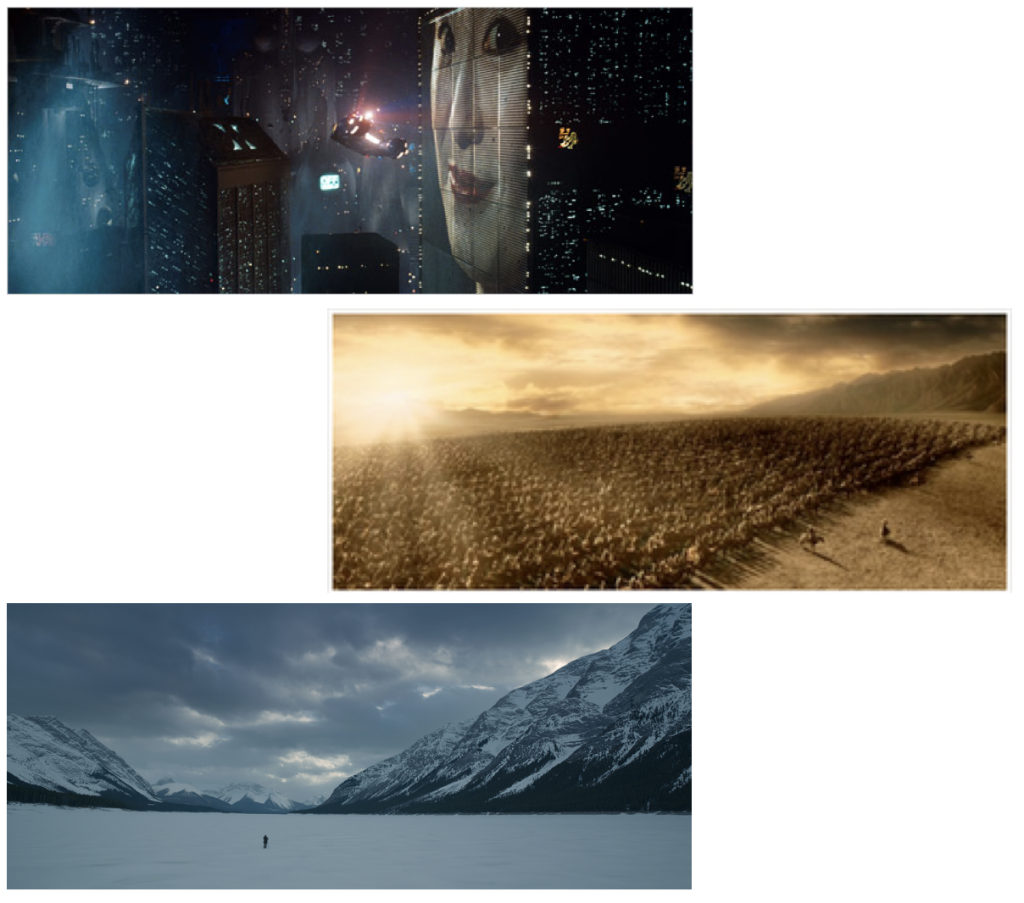
“Lawrence of Arabia” (1962)
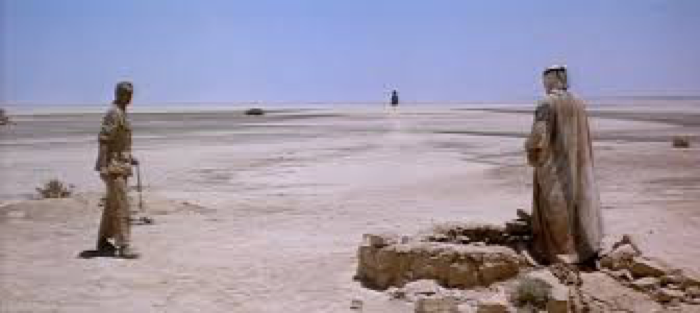
Our use and perception of different types of framing are often designed to manipulate our sense of distance from subjects and objects in the frame. In this clip from “Lawrence of Arabia” directed by David Lean, an approaching threat is all the more intimidating as it inexorably approaches from a distance. The filmmakers do not cut to a closer shot of the oncoming danger. We the viewers share the perception and point of view of the foreground characters. Thus the menace increases as the peril moves from an extreme long shot to a long shot.
WATCH: Lawrence of Arabia (2/8) Movie CLIP – Ali’s Well (1962) HD (https://youtu.be/ud1zpHW3ito)
2-15: SUMMARY
Framing:
- Extreme Close-up – the detail is everything.
- Close-up – the face or the object is everything.
- Shoulder Shot – the face is paramount, but wardrobe and posture and environment have something to add.
- Medium Shot –the face is important, but no more so than the posture and the wardrobe, and the environment has value.
- Full Shot – the whole person is most important; it dominates and comments upon the environment
- Long Shot – the person’s place in the environment is of greatest importance
- Extreme Long Shot – the environment and its dominance of the person is of paramount importance
WATCH: Why Framing Matters in Movies (https://vimeo.com/206054710)
WATCH: Best Shots of All Time, Part 1 (https://youtu.be/hWiIEiyWFTY)
OPTIONAL VIEWING: Michael Cimino / Wide Shot (https://vimeo.com/177463099)
OPTIONAL VIEWING: Best Shots of All Time, Part 2 (https://youtu.be/vHY1HeaLSL4)
EXAMPLES
“Jaws” Close-ups
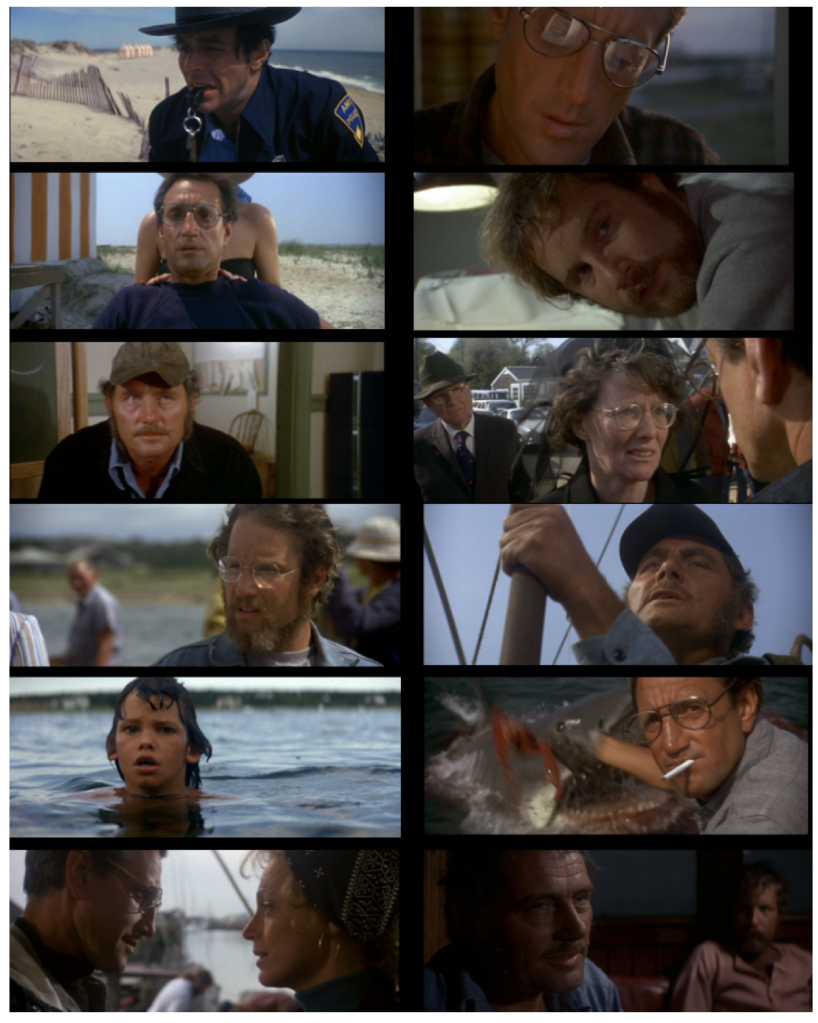
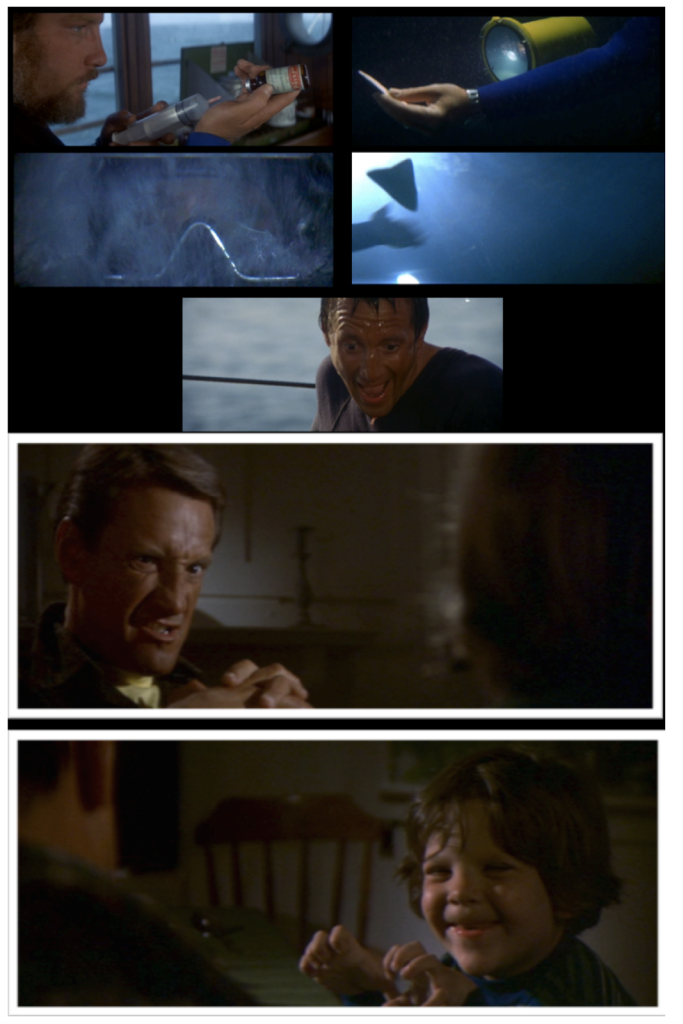
“Jaws” Medium Shots
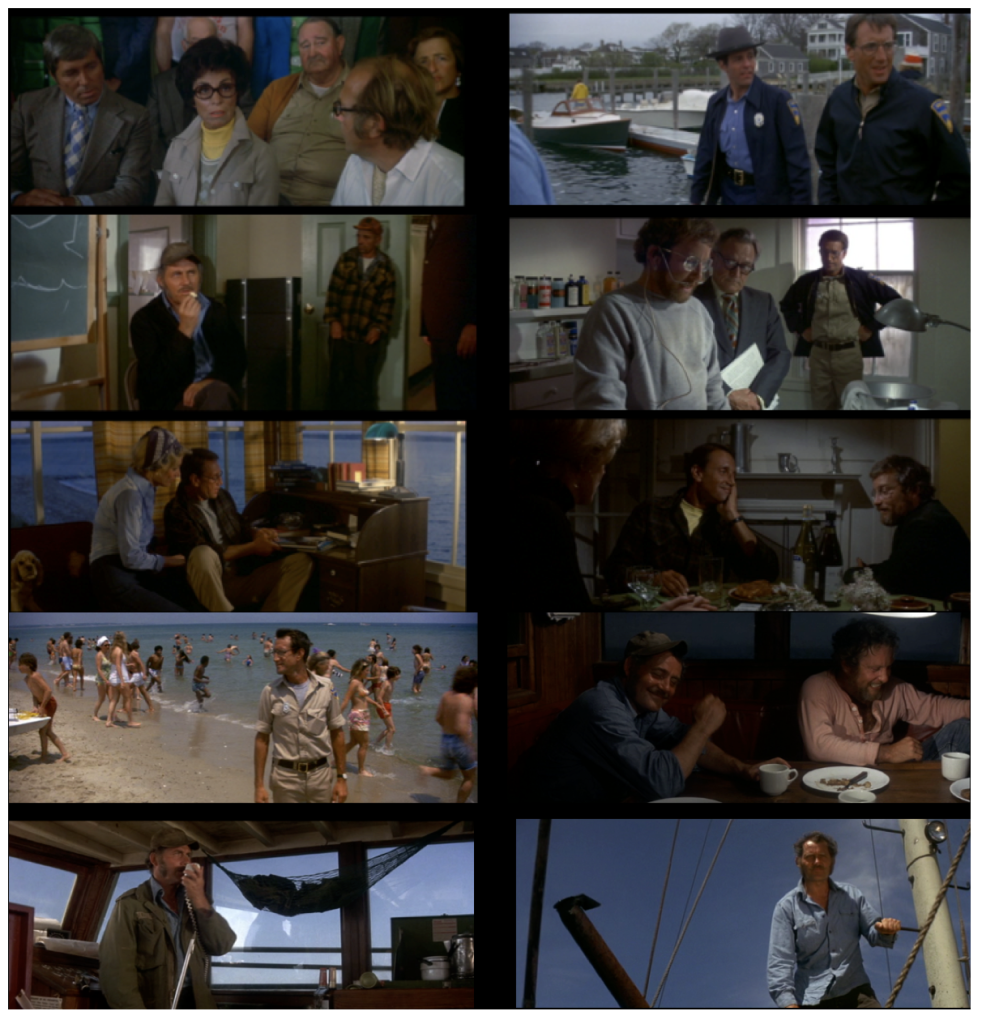
“Jaws” Full Shots
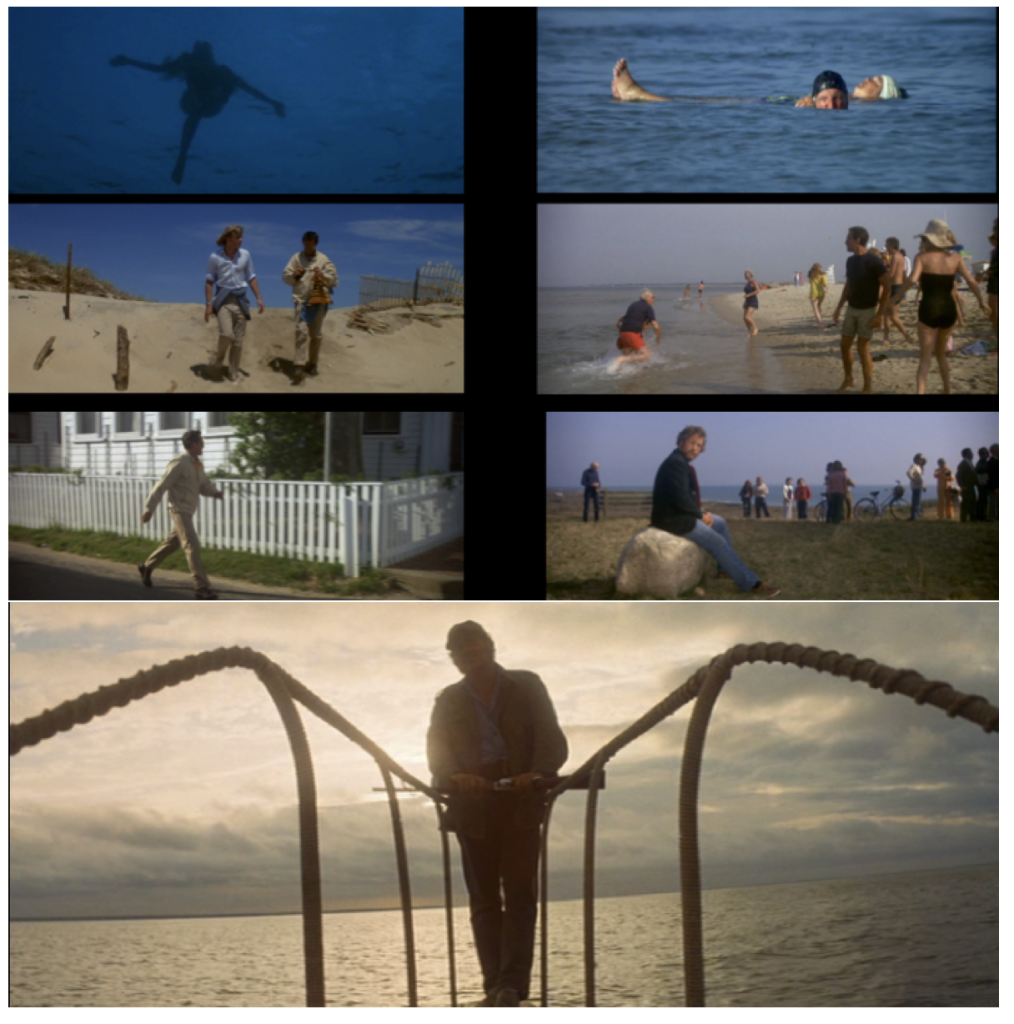
“Jaws” Long Shots
